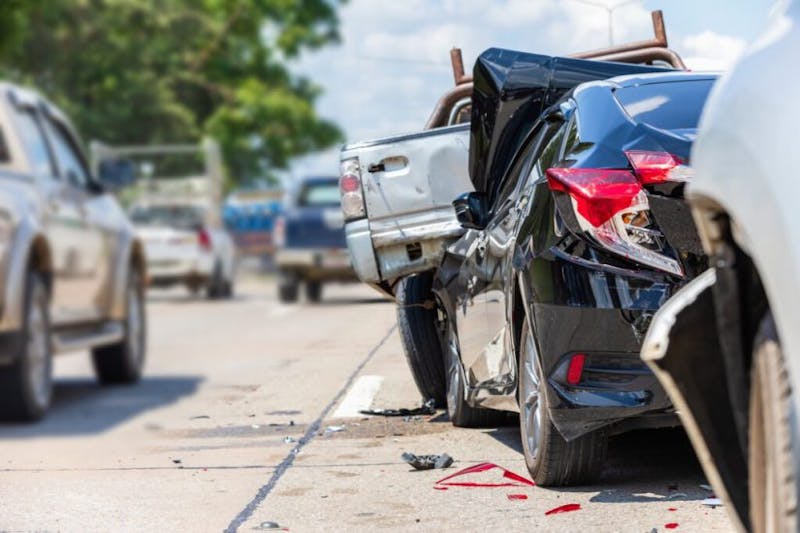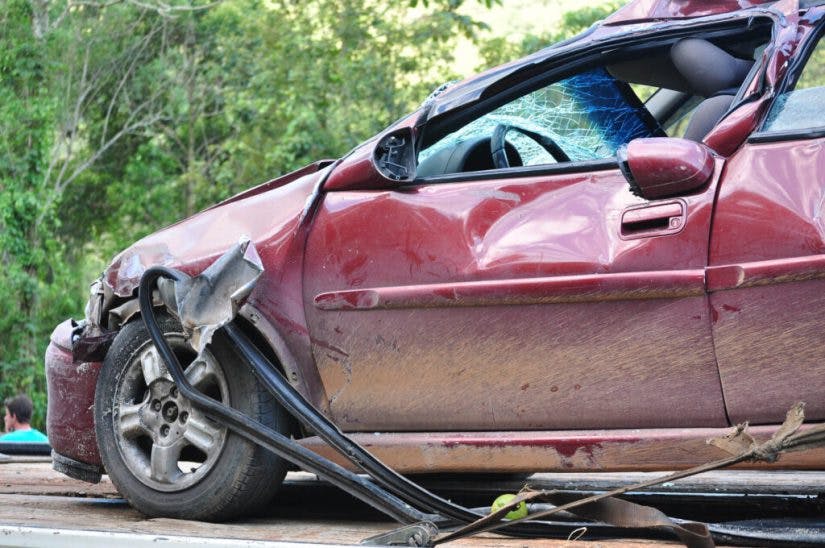
According to the Atlanta Regional Commission (ARC), Gwinnett County is the ninth fastest-growing county in Metro Atlanta. Currently, it is the second most populated county in the state, with 936,250 residents in 2019. By 2050, the population forecast is a whopping 1,484,742! With this kind of rapid growth comes a whole host of opportunities to experience more traffic and, unfortunately, more car collisions.
According to CBS 46 in Atlanta, Gwinnett County is the worst in the Metro area regarding fatal accidents per 100,000 people. The deadliest spot is at Highway 316 and Buford Drive, an intersection with four deaths over the past three years alone.
Unfortunately, there are many more deadly intersections within Gwinnett County. The Atlanta Regional Commission records and notes traffic patterns within the region and suggests that those driving in the suburbs tend to go faster than, say, down a heavily-trafficked road downtown.
Gwinnett County is mainly composed of suburbs. In 2010 there were 24,059 motor vehicle accidents, and that number went up to 36,094 by 2014.
In 2015, the National Highways Traffic Safety Administration noted 32 deaths in total from collisions. Thirty of these occurred at intersections.
The leading cause of car crashes in Gwinnett County is speeding, explaining why so many intersections have a high volume of collisions.
High speeds make a car accident more likely because it takes a longer distance to stop or slow down. These accidents are often more deadly due to the accelerated impact of one or both cars.

Gwinnett County Data
Gwinnett County Police Officers made over 27,000 accident reports in In 2015,
Of the 97 severe calls that the Gwinnett County Police Department’s Accident Investigation Unit responded to, 53 were fatal. Of those, 11 involved an intoxicated driver.
Most fatal accidents result from failure to yield, maintaining the correct lane, distracted or reckless driving, and not obeying traffic.
The Gwinnett County Police Traffic Motor Unit issued 4,638 distracted driving citations in the past three years, most of these for texting.
What Are the Most Dangerous Gwinnett County Intersections?
You may be surprised to learn that Gwinnett County has some of Georgia’s most deadly intersections. Is there an intersection on this list that you use regularly?
- Jimmy Carter Boulevard and Peachtree Industrial Boulevard; Norcross
- Scenic Highway and SR78; Snellville
- Buford Drive and Buford Mill Drive; Buford
- Nelson Brogdon Boulevard and Peachtree Industrial Boulevard; Sugar Hill
- SR 316 and Fence Road; Dacula
- SR316 and Winder Highway; Dacula
- Buford Drive and Old Peachtree Road; Lawrenceville
- Lawrenceville Highway and Lawrenceville Suwanee Road; Lawrenceville
- Duluth Highway and Riverside Parkway; Lawrenceville
- Lawrenceville Highway and Sugarloaf Parkway; Lawrenceville
- Duluth Highway and Satellite Boulevard; Duluth
- Braselton Highway and Hamilton Mill Road; Dacula
- Hewatt Road and Stone Mountain Highway; Snellville
- Goshen Springs Road and Jimmy Carter Boulevard; Norcross,
- Peachtree Industrial Boulevard and McGinnis Ferry Road; Suwanee
- Steve Reynolds Boulevard and Venture Drive; Duluth
- Pleasant Hill Road and Satellite Boulevard; Duluth
- Beaver Ruin Road and Indian Trail Road; Norcross
- Brook Hollow and Jimmy Carter Boulevard; Norcross
- Cruise Road and Sugarloaf Parkway; Lawrenceville
- State Road 316 and Harbins Road in Dacula
High traffic areas, congestion, confusing traffic signs, drivers unfamiliar with the site, nearby shopping centers and restaurants, and poor visibility: all of these are significant factors as to why serious accidents occur every year.
By being aware of how dangerous some of these roads are, you can be on guard by driving defensively.
Tips on Driving Defensively—and How It Can Save You
When other drivers are involved, a quick trip to the store or work can easily end in a collision. Environmental factors, road conditions, aggressive or distracted drivers: all can make a powerful impact on your own drive.
Still, there are things you can do to anticipate and avoid many collisions. Defensive driving involves many aspects that can keep you and your loved ones safe.
Plan Out Your Route
Did you know that defensive driving starts before you even get in the car? It’s always good to map out how you will reach your destination. Check the weather conditions so you know to anticipate rain, ice, or more. If there is heavy traffic, give yourself enough time to get to your destination. Many times, people make simple mistakes because they are in a rush.
If you already know that the road will be congested, you can consider the extra time it will take you. If you are merging onto highway ramps or other avenues, take extra precautions. Leave enough room in front of you to slow down or brake if needed.
This eliminates stress and anxiety, plus you can drive cautiously and be aware of the cars around you.
Be Aware of Your Surroundings
If you keep an eye out on all the cars around you, you’ll never be surprised by a quick merge or dangerous turn from another driver.
While it’s not possible to always see everything around at all times, it is possible to continually check your mirrors and pay attention to intersections before going through them.
Even if it’s a one-way street, defensive driving means checking both ways just in case a careless driver drives the wrong way towards you. Accidents don’t always occur because the driver is not paying attention. They happen because someone else isn’t. If you take the precaution of anticipating this, you can potentially save yourself severe injury and the headache that comes with dealing with a wrecked vehicle.
Often, defensive drivers will even wait before going on a green light in case a driver accidentally runs the adjacent red light.
Anticipate The Need to Brake
Always keep more space than you need between you and the car in front of you. You never know if you’ll need to brake suddenly. In some cases, if the vehicle has broken down, you’ll need space to turn or maneuver out of your lane.
If the road conditions are slick, it’s essential to keep enough space between your vehicle and the one in front of you in case it takes you twice as long to come to a complete stop.
When you brake, you also signal to the cars behind you that you are slowing down, so they have enough time to start braking long before they need to.
Don’t Drive Offensively
Defensive driving is the opposite of aggressive driving.
Just because other drivers are erratic, impatient, or aggressive doesn’t mean you need to respond in kind.
Often, road rage is a reaction to someone else’s hostility. Things can get heated quickly. We have all heard stories of entirely avoidable accidents happening because neither driver would take the time to calm down.
Always keep your cool. You want to get to your destination safely.
Don’t Get Distracted
As simple as it might sound, defensive driving involves keeping your eyes on the road as much as possible.
This means avoiding distractions like changing the radio station, texting, and even engaging in a conversation. It only takes a moment of going through your phone looking for a specific song when a sudden accident can occur. Without your eyes on the road, you can easily collide with someone.
According to the Governor’s Office of Highway safety, Georgia has the third-highest rate in the United States for texting and driving offenders.
The Peach State has hands-free laws that took effect in 2018, and the penalties can be severe.
The road is full of different hazards besides other drivers. By paying attention, you can avoid potholes, sudden lane closures, road construction, debris, and more.
It is always recommended that you think proactively by anticipating any event that could occur. By being prepared, you can make a significant impact on whether you arrive at your destination safely.
Follow the Rules of the Road
Many factors can combine to contribute to fatal collisions. A few ways you can make sure you are always safe include:
- Drive defensively
- Don’t drink and drive
- Always wear your seatbelt
- Yield to pedestrians and other cars
- Don’t speed
- Don’t text and drive
- Keep calm
Contact Your Gwinnett County Accident Attorney
If you have been injured in a car accident in Gwinnett County, we are here to help.
Our experienced car accident lawyers have years of experience in handling car accident cases. We can walk you through each step of the process.
By obeying the road and defensive driving rules, you can reduce the risk of unavoidable crashes. The Pendergrass Law Firm can determine who is at fault and help you seek compensation to cover medical bills, lost wages, diminished value of your vehicle, and more.


